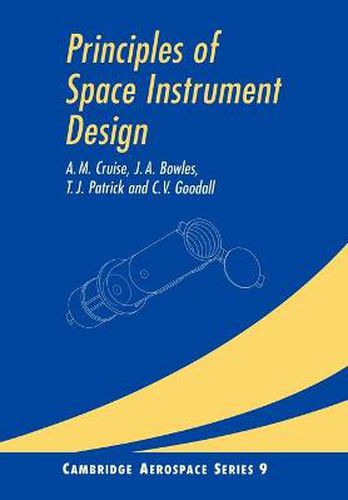Readings Newsletter
Become a Readings Member to make your shopping experience even easier.
Sign in or sign up for free!
You’re not far away from qualifying for FREE standard shipping within Australia
You’ve qualified for FREE standard shipping within Australia
The cart is loading…






This book provides an informative account of the design of instruments used in rockets and spacecraft. The volume begins with a chapter introducing the basic principles of designing for the space environment. Following chapters discuss mechanical, structural, thermal and electronic design including the problems that are frequently encountered in the testing and verification of spacecraft subsystems. Important topics are described, including stress analysis, multilayer insulation, two-dimensional sensor systems, mechanisms, the structure of space optics, and project management and control. A final chapter looks towards future developments of space instrument design and addresses issues arising from financial constraints. The book contains lists of symbols, acronyms and units and a comprehensive reference list. Worked examples are found throughout the text. This volume is suitable for researchers and engineers in spacecraft and space instrument design. It will also be valuable to graduate students of physics, space science, spacecraft engineering and astronautics.
$9.00 standard shipping within Australia
FREE standard shipping within Australia for orders over $100.00
Express & International shipping calculated at checkout
This book provides an informative account of the design of instruments used in rockets and spacecraft. The volume begins with a chapter introducing the basic principles of designing for the space environment. Following chapters discuss mechanical, structural, thermal and electronic design including the problems that are frequently encountered in the testing and verification of spacecraft subsystems. Important topics are described, including stress analysis, multilayer insulation, two-dimensional sensor systems, mechanisms, the structure of space optics, and project management and control. A final chapter looks towards future developments of space instrument design and addresses issues arising from financial constraints. The book contains lists of symbols, acronyms and units and a comprehensive reference list. Worked examples are found throughout the text. This volume is suitable for researchers and engineers in spacecraft and space instrument design. It will also be valuable to graduate students of physics, space science, spacecraft engineering and astronautics.